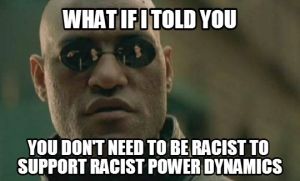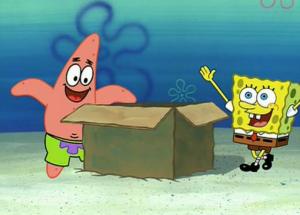Like every massive global technology since the propagation of the spoken word, from simple tools to the printing press to the innovations which helped land humans on the moon, the internet has changed the way humanity understands and interacts with itself.
In Erich R. Merkle and Rhonda A. Richardson’s “Digital Dating and Virtual Relating: Conceptualizing Computer Mediated Romantic Relationships,” the authors describe the phenomena of CMRs, or computer mediated relationships, and how interpersonal relationships are being forged via and affected by computer technology. While the article was published almost fourteen years ago, many of the points that the authors make are still valid today. For example, they discuss how tricky online interpersonal relationships are because in order to forge these relationships, extreme self-disclosure is necessary because “unlike face-to-face relating, the importance of physical attractiveness in CMR, as a relationship determinant, is minimized by the ability to know someone through intense mutual self-disclosure and intimate sharing of private worldviews (189).” This becomes a challenge, however, because all of the things that you learn about another person come from self-disclosure, meaning that it could be either in part or entirely fabricated. Therefore, forging CMRs is much more about faith than it is about one’s own human intuition about a person, which is an impression difficult to gauge in a virtual setting.
Even this point though, say Merkle and Richardson, is challenging because a user is always subject to the possibility of their partner disengaging at will. Having an attachment broken suddenly and seemingly without the ability to challenge or intuit said action can be devastating because it allows the imagination to assume all the reasons why the relationship failed and the user was rejected. This can affect self-esteem, and with a large pool of other potential relationships to form, can be dangerous. For example, the rejected partner can assume, since the relationship was not primarily based on looks or physical intimacy, that their self-disclosure and therefore presented personality was somehow “not enough” for their partner. In their next relationship, the user may then attempt to better sell or promote themselves in order to maintain a lasting CMR. If that is the case, what does that do to the perceived emotional intimacy of the CMR or to the user’s ability to understand and synthesize their “online” self and their “in real life” self into one “authentic” person?
One of the most salient points that the authors make concerns conflict mediation or the lack thereof involved in CMRs. It is this point that best helps us understand the going-ons in the short film Noah (2013). Briefly, Noah is a film that takes place completely on the screen of a young man after whom the film is named. Noah suspects his girlfriend of cheating on him, hacks into her Facebook account to find “proof” of his suspicions, and breaks up with himself while he’s at it. Noah is obviously paranoid, has low self-esteem, and engages in exactly the behavior that Merkle and Richardson emphasize when he ignores his ex-girlfriend’s emails, messages, and texts when she realizes what he has done. Through his insecurity and inability to successfully manage the conflict he finds himself in with his girlfriend (his unfounded suspicions of her infidelity), Noah systematically impedes his own life and happiness.
Not all cases of CMR are like Noah’s, thankfully, as there are people who have had enough face-to-face experience in their lives to develop the problem-solving and conflict management skills that Noah seems to lack. Personally, I believe that it is wholly possible for people to find fulfilling sexual and emotional CMRs, although instances of such are uncommon. People are complicated. Some people are fine with the relationships they build and maintain via the internet. Some people need more than a CMR, and will probably be the ones who take the steps necessary to mediate those relationships into face-to-face ones. Most people, whether it be in a face-to-face setting or in a CMR, always seem to be looking for reasons to distrust others, whether those reasons be conscious or largely unconscious behavior.
Merkle and Richardson outline the four C’s of peacemaking as “contact, cooperation, communication, and conciliation (190)”. Peacemaking and peacekeeping, I believe, are among the key principles of a durable and healthy CMR and/or face-to-face interpersonal relationship. Ironically, it is the abundant accessibility of these sorts of relationships (whether CMR via Facebook or face-to-face via mutual friends or internet dating site) that will limit the current and the forthcoming generations’ ability to manage and resolve their conflicts in a healthy way.
Healthy resolution is challenging; communication is hard and conciliation is not easy, nor is it supposed to be. It is precisely this challenging aspect of peacemaking that makes it all the more worthwhile and important for maturity and growth. The concept of minimax, which is when we seek the most satisfying situations out of the least amount of investment or effort, is a human behavior that drives individuals from engaging in the hard work it takes to confront themselves and grow as people and it will ultimately play a large role in this generation’s and subsequent generations’ inability to understand and create healthy dynamics of intimacy.





















